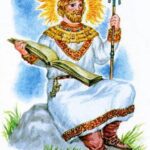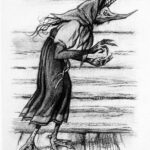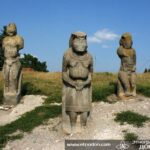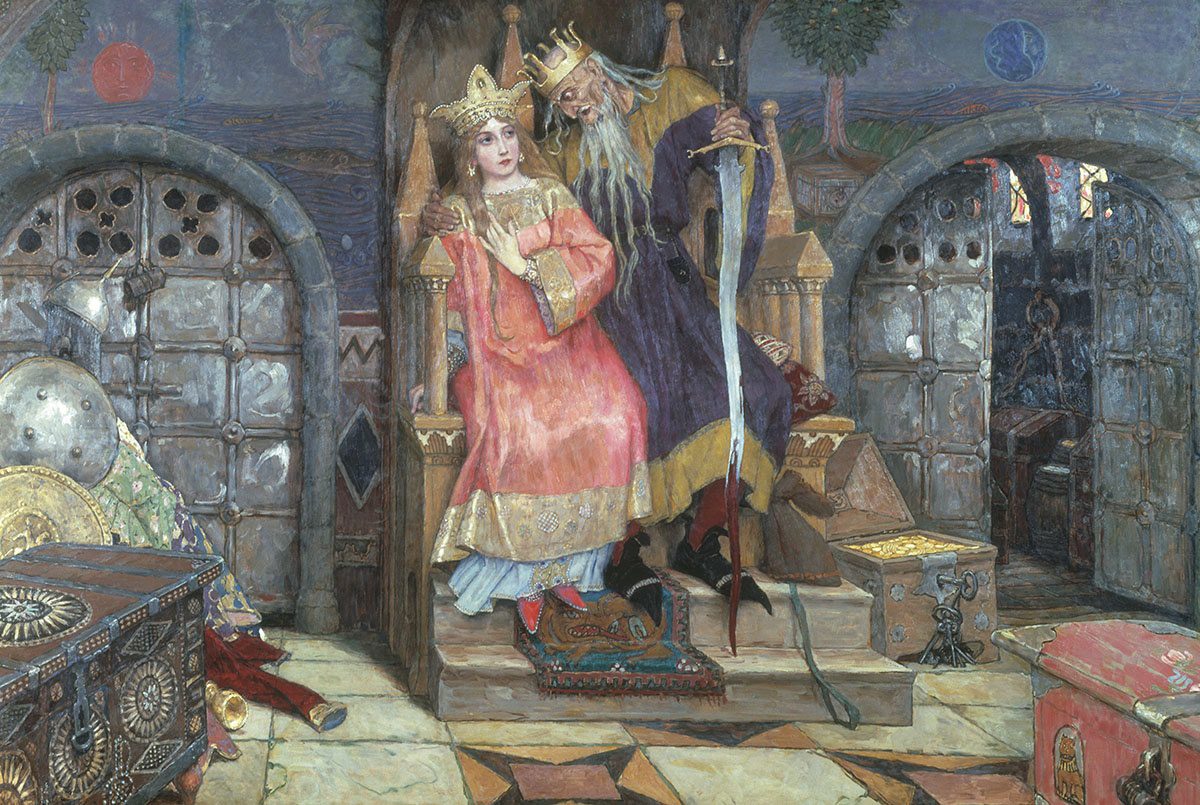Koschei, often referred to as Koschei the Deathless, is a significant figure in Slavic mythology. He embodies the archetype of the immortal villain, frequently appearing in Russian folktales and fairy tales. Koschei is characterized by his cunning nature and his ability to evade death, making him a formidable antagonist for heroes and heroines alike. His stories often revolve around themes of death, life, and the quest for immortality, capturing the imagination of those who hear them. Through his numerous appearances in folklore, Koschei has become a symbol of the dark and mysterious aspects of the Slavic cultural heritage.
Origins and Characteristics of Koschei
The origins of Koschei are deeply rooted in Slavic folklore, with his character evolving over centuries. He is often depicted as a tall, thin man with a skeletal appearance, which symbolizes his connection to death. Koschei’s most defining characteristic is his immortality, which he achieves through a clever trick: his soul is hidden away in a needle, which is itself concealed in an egg, located within a duck, which is inside a hare, that is kept in an iron chest, buried under a mighty oak tree on the island of Buyan. This complex hiding place makes it nearly impossible to destroy him, adding to his status as a fearsome villain.
 Koliada
KoliadaKoschei’s immortality is not just a source of power; it also represents the theme of eternal life versus the natural cycle of life and death. In many tales, he kidnaps beautiful maidens, often princesses, and holds them captive. His obsession with these young women highlights his role as a predatory figure, using his powers to exert control over others. Additionally, Koschei is often portrayed as a sorcerer, possessing various magical abilities that allow him to shape-shift and manipulate his surroundings to his advantage.
Koschei in Folktales
Koschei appears in numerous folktales across Eastern Europe, particularly in Russian stories. One of the most famous tales is that of Ivan Tsarevich and the Firebird. In this story, Ivan embarks on a quest to rescue a princess who has been captured by Koschei. Throughout his journey, he encounters various challenges and magical beings, showcasing the hero’s struggle against Koschei’s dark influence. The tale is rich in symbolism, with the Firebird representing hope and the possibility of overcoming evil.
Another popular story involves Koschei’s battle with Prince Ivan. In this narrative, Prince Ivan must outsmart Koschei to save his beloved, demonstrating the classic theme of good versus evil. The prince seeks the hidden needle that contains Koschei’s soul, which leads him on a perilous adventure. This quest not only tests Ivan’s bravery but also his intelligence, as he must decipher the clues that lead him to Koschei’s secret. Ultimately, these tales emphasize the importance of courage, wit, and the triumph of good over evil.
 Kikimora
KikimoraThe Symbolism of Koschei
Koschei’s character is steeped in rich symbolism that reflects the complexities of human nature and the struggle against darkness. His immortality can be seen as a representation of the human fear of death and the desire for eternal life. In many cultures, the quest for immortality is fraught with challenges and moral dilemmas, and Koschei embodies this struggle. His existence raises questions about the consequences of seeking power and control over life itself.
Moreover, Koschei’s relationship with women in these stories often reflects deeper societal themes. The way he captures and holds maidens against their will can symbolize the patriarchal oppression present in many cultures. His character serves as a cautionary tale about the dangers of unchecked power and the impact of evil on innocent lives. This duality of Koschei as both a villain and a representation of societal issues makes him a compelling figure in Slavic mythology.
Koschei in Modern Culture
The legacy of Koschei the Deathless extends beyond traditional folklore into modern culture. He has been featured in various forms of media, including literature, theater, and film. In contemporary retellings, Koschei is often reimagined, sometimes portrayed with more depth and complexity. These adaptations explore his motivations, fears, and desires, allowing audiences to engage with his character on a more personal level.
 Kamennaia Baba
Kamennaia BabaIn literature, Koschei’s character can be found in works that draw on Slavic myths, often as a representation of the struggle against tyranny or oppression. His story resonates with modern themes of resilience and the fight for freedom, making him relevant to contemporary audiences. Additionally, Koschei’s presence in films and animated features introduces him to younger generations, ensuring that his legacy endures.
The Influence of Koschei on Other Mythologies
Koschei’s archetype as an immortal villain has influenced various other mythologies and folklore worldwide. His character shares similarities with figures like Hades from Greek mythology or Yama from Hindu traditions, both of whom are associated with death and the afterlife. The portrayal of an antagonist who possesses supernatural powers and seeks to control life and death is a common theme across cultures.
This shared motif highlights the universal human concerns regarding mortality and the struggle against evil forces. By examining Koschei in the context of other mythologies, we can see how different cultures interpret the themes of life, death, and immortality, revealing a rich tapestry of beliefs and values that transcend geographical boundaries.
Conclusion: The Enduring Legacy of Koschei
Koschei the Deathless remains a captivating figure in Slavic mythology, embodying the complexities of human nature and the eternal struggle between good and evil. His tales continue to resonate with audiences, reflecting timeless themes of mortality, power, and the quest for freedom. As both a villain and a symbol of deeper societal issues, Koschei’s legacy endures, reminding us of the rich cultural heritage of the Slavic people and the universal themes that connect us all.
